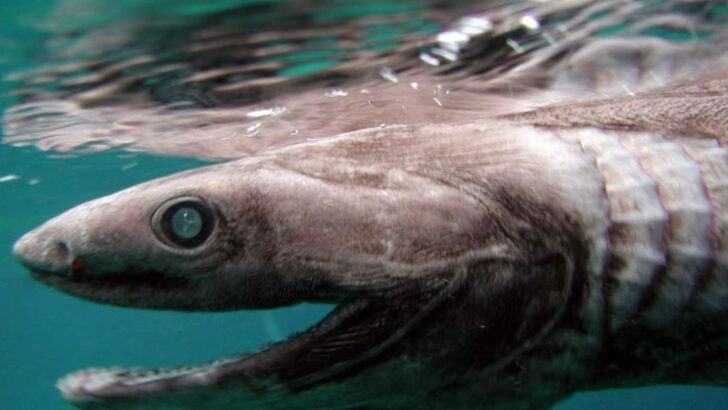Sharks don’t own the whole “terrifying ocean predator” vibe—some of their relatives are just as fierce… and way weirder.
Think all shark family members come with rows of teeth and cold, dead eyes? Think again. Some glide like ghosts. Some crush prey with flat, sneaky jaws. One even looks like it crash-landed from outer space.
These aren’t your typical finned nightmares. They might not look the part, but they’ve got the skills—and the attitude—to survive in the deep blue brawl that is the ocean.
Ready to meet ten shark relatives that don’t look like sharks but pack just as much punch? Prepare for odd shapes, wild powers, and a whole new respect for the extended shark family.
Thresher Shark
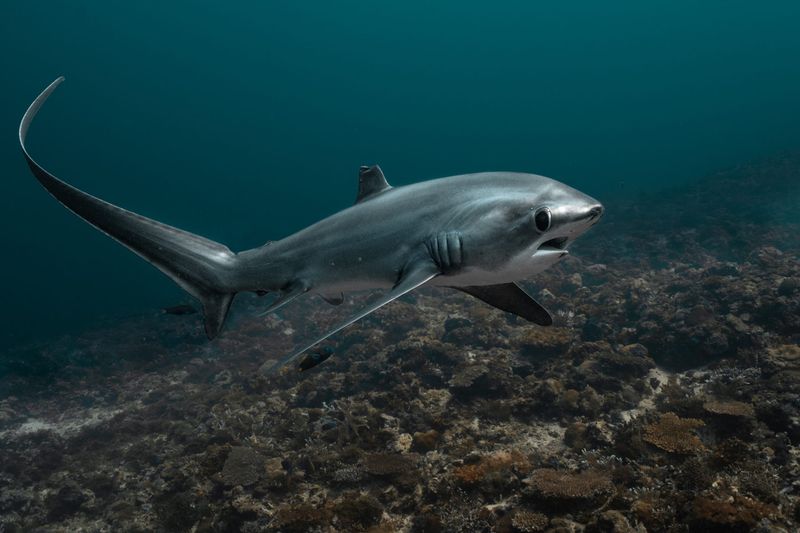
Thresher sharks are known for their extraordinarily long tails, which they use like whips to stun prey. This unique hunting technique sets them apart from typical sharks.
They often work in pairs, driving schools of fish into tight groups before unleashing their powerful tails. Their agility and speed make them efficient hunters in open water.
Chimaera
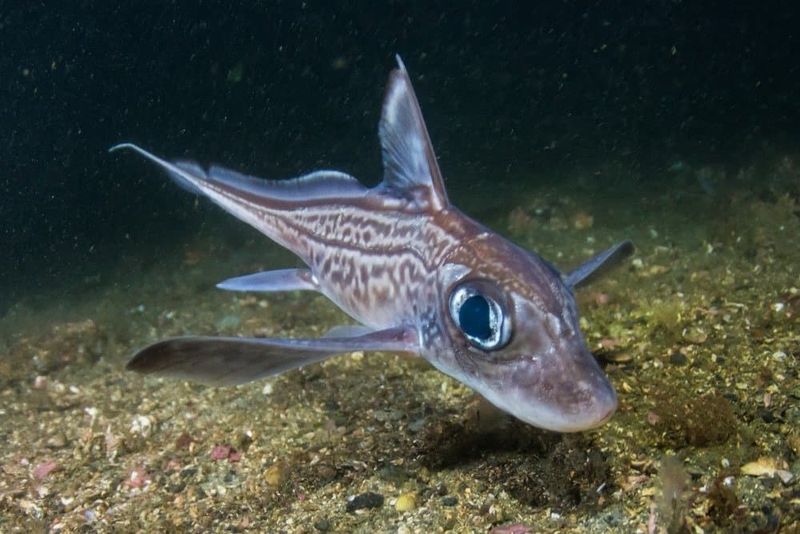
In the shadowy depths of the ocean, the chimaera, also known as the ‘ghost shark,’ drifts silently. This mysterious relative of the shark is known for its ethereal appearance, with pale, almost translucent skin and wing-like fins.
Its large, haunting eyes help it navigate the dark waters, making it an adept hunter. Despite its ghostly looks, the chimaera possesses venomous spines and sharp teeth, making it a formidable predator.
Its presence in the dark abyss is both eerie and captivating, proving that appearances can be deceiving.
Guitar Fish
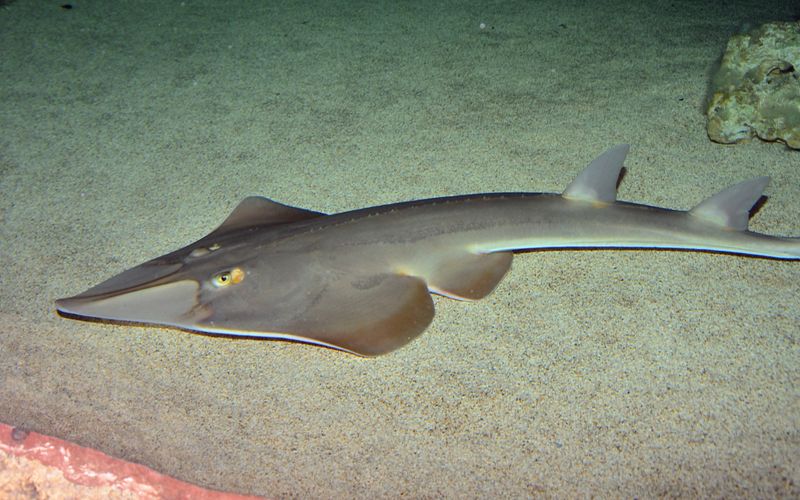
Picture a fish that combines the traits of a shark and a ray, and you’ve got the guitar fish. Its flattened body and elongated shape resemble a guitar, earning its whimsical name.
Found on sandy ocean floors, it uses its appearance to blend seamlessly into the environment. While it may seem docile, the guitar fish is a skilled hunter, using its speed and agility to catch unsuspecting prey.
Its quiet yet strategic nature in hunting makes it a silent but deadly participant in the marine ecosystem.
Bichir
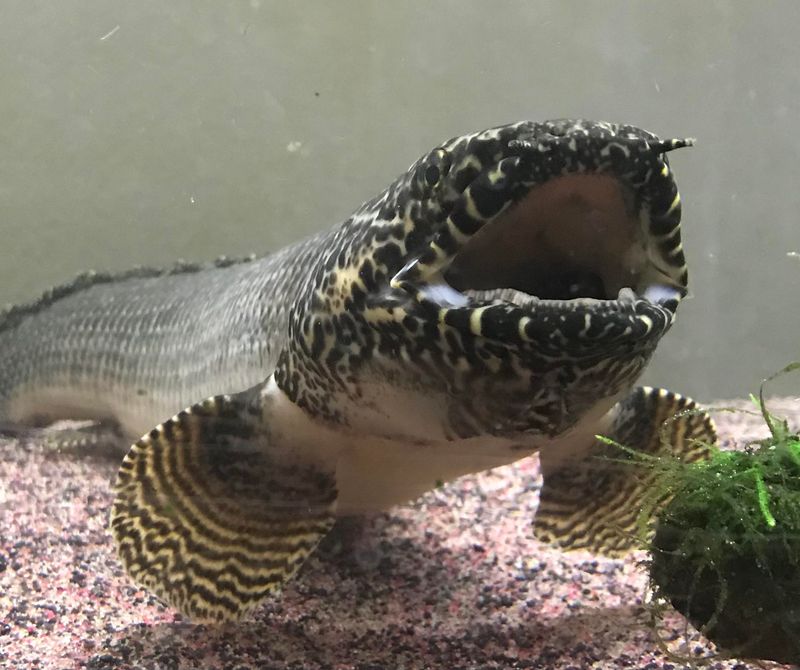
If you’re looking for a living fossil, the bichir fits the bill perfectly. With its elongated, armored body, this freshwater fish seems straight out of prehistoric times. Despite lacking the shark’s sleek silhouette, it’s a fierce predator in its own right.
Found primarily in African waters, the bichir uses its keen sense of smell and swift movements to hunt. Its ability to breathe air allows it to survive in low-oxygen environments. This adaptive prowess ensures its reign as a top predator in its habitat.
Stingray
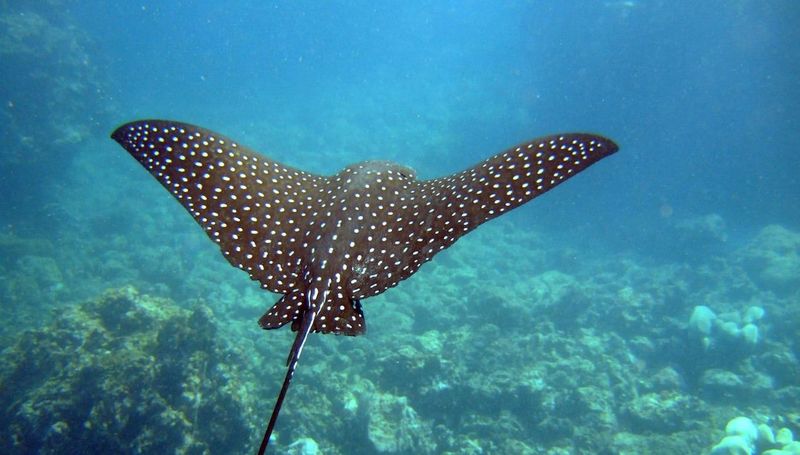
The stingray’s smooth, undulating motion across ocean floors often mesmerizes observers. Despite its tranquil appearance, it wields a potent weapon—its venomous tail barb.
Related to sharks, stingrays are adept hunters, using electroreceptors to detect hidden prey beneath the sand. Their graceful movements and deadly defense make them formidable members of the ocean community.
Whether resting on the seabed or soaring through water, stingrays blend elegance with danger, a truly captivating marine creature.
Angel Shark
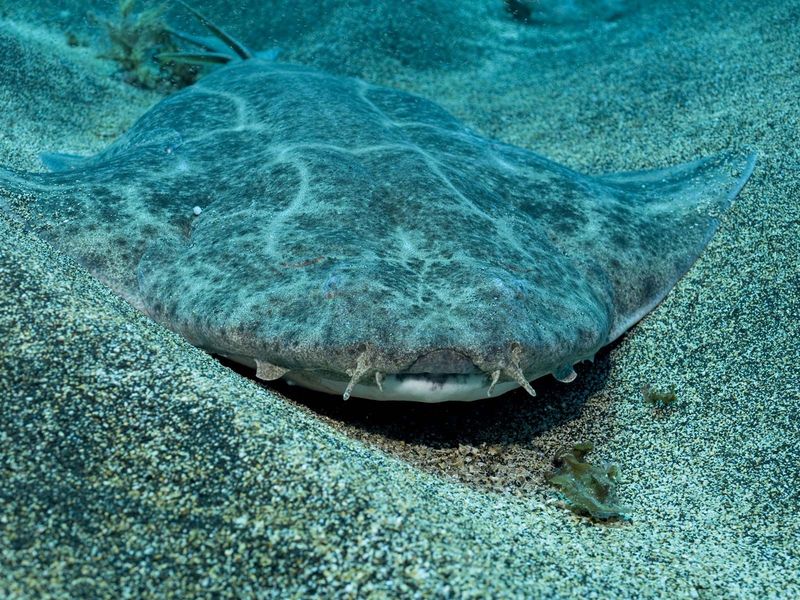
Angel sharks, with their flat bodies and broad pectoral fins, resemble rays more than sharks. These masters of disguise bury themselves in sand to ambush prey.
Their ability to remain motionless for hours makes them formidable predators in the ocean. When unsuspecting fish swim by, they strike with incredible speed and precision.
Elephant Fish
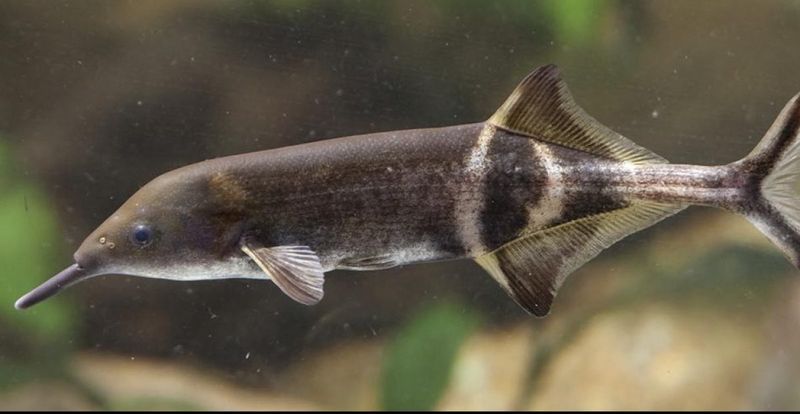
The elephant fish is a peculiar marine creature, sporting a trunk-like snout that sets it apart from its relatives. This odd-looking fish is a cousin to sharks and chimaeras, inhabiting the temperate waters of the Southern Hemisphere.
Its snout serves as a sensory organ, detecting prey hidden beneath the ocean floor. With a slender body and a gentle undulating swim, the elephant fish is a master of stealth. Its unique adaptations ensure its survival in diverse marine environments.
Goblin Shark
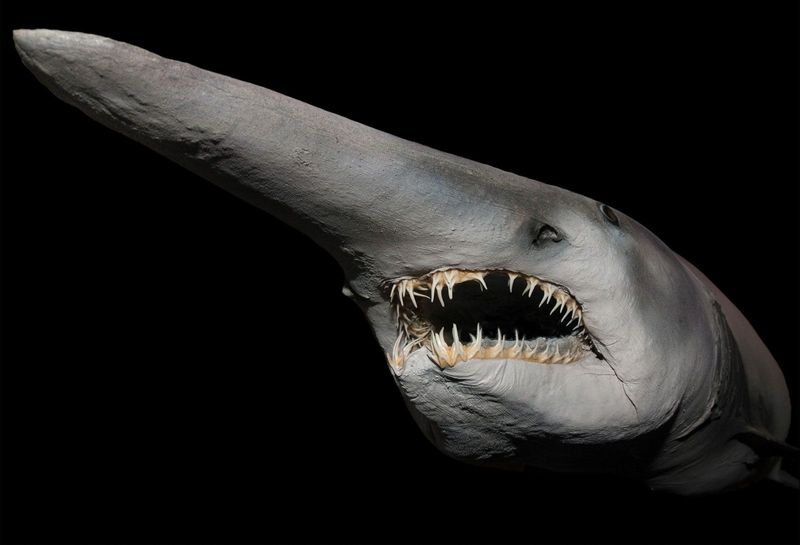
With a ghastly appearance, the Goblin Shark prowls the ocean’s depths. Its elongated snout and razor-sharp teeth give it an unusual but hauntingly fascinating look. This deep-sea denizen is rarely seen, yet its presence is unforgettable.
Despite its name, the Goblin Shark is more of a solitary lurker than a goblin-like trickster. Its ability to thrust its jaw forward to snatch prey is both terrifying and impressive.
A living fossil of sorts, it evokes curiosities from marine biologists and explorers alike. Mysterious and secretive, it remains one of the ocean’s most enigmatic creatures.
Frilled Shark

Meet the Frilled Shark, an ancient creature of the sea. Resembling a sea serpent, it’s often mistaken for myth rather than reality. Its eel-like body and 300 needle-sharp teeth have a prehistoric aura.
This shark’s unique gills, which appear frilled, give it its name and its mysterious allure. Though it swims in deep, dark waters, it’s a master of stealth and surprise when hunting unsuspecting prey.
The Frilled Shark is a reminder of the ocean’s vast unknowns. Its rare sightings add to the allure and mystique surrounding this elusive predator.
Wobbegong Shark
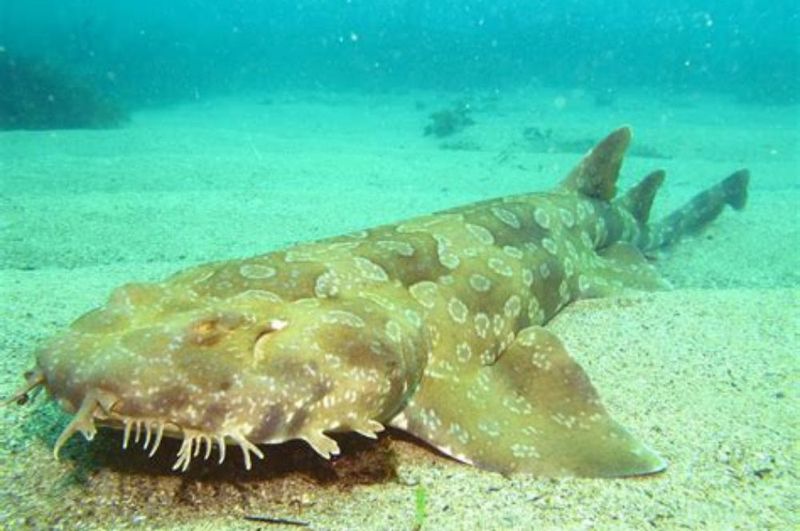
The Wobbegong Shark may not look like the typical shark, but don’t be fooled. This bottom-dweller uses camouflage to surprise its prey. Its name, derived from an Aboriginal word, highlights its unique appearance.
With intricate patterns and tassel-like skin flaps, it blends perfectly with the ocean floor. This mastery of disguise makes it a cunning predator.
While it appears docile, the Wobbegong can deliver a swift, decisive bite when provoked. Its peculiar beauty and stealthy hunting tactics make it a fascinating study for marine enthusiasts and divers.

